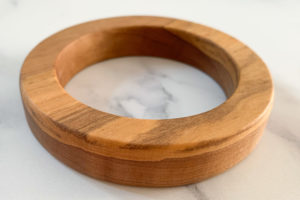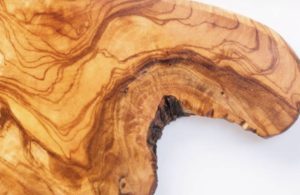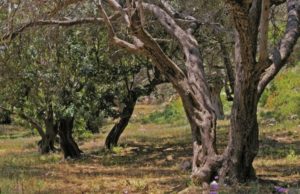/ˈɒlɪv/
It seems only apt that I start my series of blogs about the materials I use, with Olive wood. This is my all time, absolute favourite, which you may have noticed in my regular use of it in my work.
I personally feel empowered when I wear my Olive wood bangles and have been told by a few of my customers that they have often worn theirs into meetings, where they are leading, treating their item of jewellery almost like their talisman. Wearing it like their own personal armour, giving them confidence whilst still embracing their own unique styles and values.
I find this a beautiful thought, that not only has someone purchased these items for their unique beauty, but also that they now hold the added value of personal connection, acting as mementos to that persons life stories. 
One of the reasons I love working with wood, but in particular Olive wood is because each cut will represent the grain and colouring differently. Even if following a pattern and style it will still be completely unique. This I believe to be important for the person wearing my jewellery, because we are all unique and deserve to represent ourselves as such. Honouring those quirks, those life experiences and beliefs that make us truly who we are. Taking pride and strength in knowing this is important, but if you need that reminder a much beloved item of jewellery can help.
What Is Olive Wood?
Olive Wood is a hard and beautifully rich coloured wood, prized all round the world for its unique grain and silky texture. In my opinion its distinct scent as it is being worked and its golden hues make this an incredibly visually striking and luxurious wood. It does not require much further decoration as it stands out on its own natural merits. Its ability to be finished silky smooth to the touch I believe just adds to the decadence of this wood.
This wood not only is stunning to look at, but it comes from beautifully historic trees, playing significant symbolic roles within biblical documents such as the Bible and Quran and has been referenced in ancient scrolls found in Egypt and Greece. Over the millennias it has held symbolic meaning for peace, wisdom, power, glory, abundance, purity, and fertility. Often seen as a wholesome and hopeful tree that brings so much joy and value to whatever it’s used for.
In some cultures it’s traditionally gifted in one form or another as a marriage present, wishing the happy couple abundance and strength. I myself was given a stunning slab of olive wood on my wedding day, which on it is engraved mine and my husband’s details and wedding date. To this day that remains pride of place on my mantle piece. A wonderful reminder of a happy day and a promise to our future together.
Where Do You Find Olive Wood?
The olive tree, as already suggested, is a historical tree that can live an exceptionally long time, growing usually up to 10 metres high, but with the potential to grow up to 40 metres high. This is a powerful and stately looking tree. In some locations it has grown to the ripe old age of around 2-3000 years old. Some of its earliest traces date back 60 000 years to the Ancient Egyptians and Greeks, which is amazing. Olive branches were found in the tomb of Egyptian pharaoh Tutankhamun. Greek mythologies built on the use of olive branches by the gods. Its history is rich and varied across many territories, but all are integral to various cultural traditions.
Farmed from the trees of Olea europaea they were originally found around the southern and eastern coast of the Mediterranean. They managed to spread beyond Europe, due to the growth of its delicious olive fruit that we just love to snack on and its natural olive oil. The multitude of health benefits only added to its popularity and fast spread to other countries.
The timber itself is only harvested when olive trees have stopped bearing fruit or comes from branches that have been cut as part of the pruning process. This in my mind makes it an eco-friendly, sustainably sourced and sustainably produced material.
Whilst olive lumber is very strong and dense, with a tight grain, this wood has a high sensitivity to external elements, climate changes and insect attacks. Due to this, it is rare that it is used for construction, but more for decorative purposes. It is regarded as a high end material and due to how its gnarly branches grow entwined and its sensitivities, its limitations have positively stopped it from being over exploited in production and construction, because of this, it has remained off the threatened species IUCN Red List*.
Summary
In conclusion whilst unlikely you will be wearing something quite this old, isn’t it still exciting to think you could be carrying something that has been on this planet for several centuries? I think this is one of the most exciting and valuable aspects of using wood in my work and only highlighting its natural characteristics is key to expressing this deep respect. Knowing woods are steeped in such rich culture and traditions brings a whole new value and meaning to what is already in my mind an extraordinary raw material.
We all attach different value and meaning to our treasured jewellery, so for some knowing that it might have some mythological or historical connection may be the detail they are looking for. Another tree known for this is next up in the series and is a tree well known to the UK. It’s the mighty Oak, so check back in next month to read all about it.

